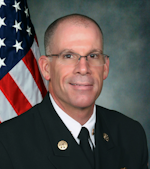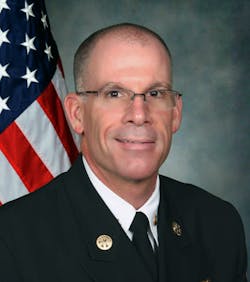As Firehouse Sees It: The Fire Service “Wall”
I’ve always been told that there are three things you should never talk about with a stranger: sex, religion and politics. Oddly enough, this year’s presidential campaign brought all three of these topics to the forefront in a way likely no one could have imagined.
While this issue went to press before we knew the outcome of the election, it’s safe to say that a portion of our country is currently boasting with excitement and another portion is reeling with dejection.
Despite your political position, there’s no disputing the fact that this election stirred a number of intriguing conversations, not all of which were productive, and at times, some of them were downright uncomfortable. One particular conversation that surfaced early in the election was the discussion of illegal immigration and the construction of a wall across our southern border.
As I listened to and read the pros and cons of building a wall from the candidates and political pundits, my mind shifted to the fire service and the "wall” that we have unconsciously created as it relates to recruitment and retention.
We often say, in a very proud and boastful manner, “Not everyone can do this job; it takes a special breed to be a firefighter.” I wholeheartedly agree that not everyone is cut out to be a firefighter, and we MUST maintain—and, in some cases, even increase—the physical fitness and minimum competency standards to serve as recruits and incumbents alike. But is it in our best interest to use a model that essentially creates a single point of entry into the fire service—a firefighter recruit class? And does this model create a barrier (wall) for potential recruits who may want to take a different route within the department, for example, into fire prevention or public education?
Consider this: Public officials and our citizens often demand that the fire department reflect the population they serve. They demand diversity of race and gender within our rank and file, and I wholeheartedly agree with this approach. Diversity of race and gender can bring about a multitude of opportunities for us to better serve and protect. But if, by our own admission, not everyone is fit nor capable of serving as a firefighter, why is it that, despite the fact that we have a number of non-firefighting positions, we limit entry into the fire service via a firefighter recruit class designed specifically for the task of firefighting?
What if we took the advice of another political figure, former President Ronald Reagan, who in his June 12, 1987, speech called for the leader of the Soviet Union, Mikhail Gorbachev, to tear down the wall and open up the barrier that divided West and East Berlin? Of course, here we’re talking about tearing down barriers that prevent good, hard-working, dedicated people from achieving their personal and professional goals.
The mental attributes and personal motivations of an individual serving as a firefighter are often far different than those of a fire marshal, a fire inspector, a fire protection engineer, a public education specialist and numerous other roles. Further, the attributes of an effective firefighter don’t automatically guarantee that he or she will be a good company officer, a good fire marshal or an effective public education specialist. Yet the path to these positions is almost always through the aforementioned single point of entry—the recruit academy.
Am I suggesting a short track or a lessoning of minimal requirements? Absolutely not! Just as we boast that not everyone can serve as a firefighter, the same can be said for each an every rank and role within our respective organizations. Minimum standards should be well defined, and the accessibility for each position should be equally applied.
I challenge you to ask yourself, do the individuals who serve in the critical roles of fire marshal, fire inspector, public education specialist, training officer, communications officer, etc., within your organization possess the physical and mental attributes to best serve your community? Are they motivated to perform at the highest level possible? Have minimum qualifications been lowered or modified to suit those of a less-than-qualified individual? Have you intentionally used these critical positions as a depot for individuals who aren’t ready or qualified to be first due on your next fire?
Right or wrong, there are many walls within the American fire service that limit the opportunities of some and enhance those of others. It’s time we tear down these walls and search for the best of the best. To do anything less is simply not the American way.

Timothy E. Sendelbach | Editor-in-Chief
Timothy E. Sendelbach is a 30-year student and educator of the fire and emergency services, and former editor-in-chief for Firehouse. He has served as an assistant fire chief with the North Las Vegas, NV, Fire Department, as the chief of training for Savannah (GA) Fire & Emergency Services and as assistant fire chief for Missouri City, TX, Fire & Rescue Services. He is a credentialed Chief Fire Officer and Chief Training Officer and has earned a master’s degree in leadership from Bellevue University, bachelor’s degrees in fire administration and arson and an associate’s degree in emergency medical care from Eastern Kentucky University.






